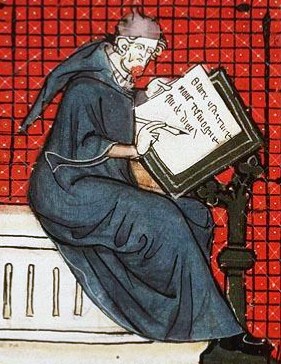Gautier de Coincy (Gautier de Coincy)

Poet, Composer, Cleric. His masterpiece, the two-volume “Miracles de Nostre-Dame” (“Miracles of Our Lady”, 1222 and 1233), is a major work of Medieval French literature and music. A mammoth verse narrative of over 30,000 lines, it chronicles miracles attributed to the Virgin Mary interspersed with songs and prayers. Coincy wrote it in French rather than Latin and his poetry abounds with virtuosic displays of puns, spoonerisms, anagrams, even double-entendres. The musical element constitutes the earliest collection of sacred songs in the vernacular and shows him to have been an expert in that art as well. Many were adapted to existing melodies from troubador love songs, though others may be entirely original. This cunning blend of sacred and profane – intended to bring a popular but still reverent spirit into the church – marked the first signs of a trend that would dominate later Renaissance music, in which liturgical texts (especially Masses) were set to secular tunes. Coincy was born in Coincy-l’Abbaye, France, and became a Benedictine monk at the Abbey of Saint-Médard in Soissons at age 15. All we have on his early adulthood is speculation that he studied music at the University of Paris. In 1414 he was appointed Abbot of the monastery in Vic-sur-Aisne, near Soissons. The only other known text of his is the poetic hagiography “The Life of Saint Christine” (c.1216). Coincy worked on “Miracles de Nostre-Dame” from 1218 to 1233, the year he was named Grand Prior of the Abbey of Saint-Médard. He spent the remainder of his life there. The “Miracles” was widely circulated. At least 80 manuscript copies made through the 15th Century survive and its influence was felt from Spain to the Netherlands. (bio by: Bobb Edwards)
Born
- January, 01, 1970
- France
Died
- September, 09, 1236
- France
Cemetery
- Abbey of Saint-Médard de Soissons (Defunct)
- Picardie
- France

